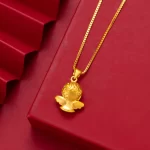Introduction
Kandi bracelets have become a vibrant symbol of self-expression, community, and creativity in modern youth culture. These colorful, handcrafted accessories are made from small plastic beads woven into intricate patterns using the loom or off-loom braiding techniques. Originally rooted in rave and EDM festival scenes, kandi bracelets have evolved into a global craft phenomenon embraced by people of all ages. Each bracelet often carries personal meaning, whether it represents friendship, energy, or emotional connection. Beyond their visual appeal, kandi bracelets play a role in social rituals like “PLUR” exchanges—where participants trade bracelets while sharing positive vibes. In this article, we’ll explore the origins of kandi bracelets, their cultural significance, how to create your own, and why they continue to inspire creativity and connection around the world.
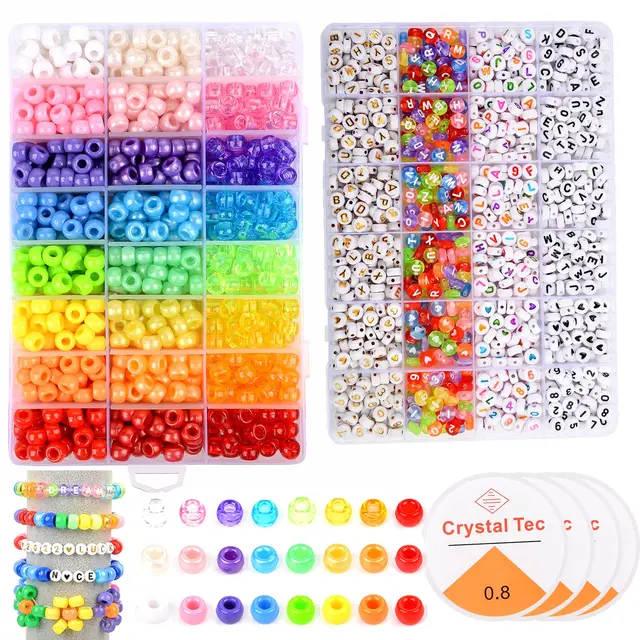 The Origins and Cultural Significance of Kandi Bracelet
The Origins and Cultural Significance of Kandi Bracelet
From Rave Culture to Mainstream Popularity
Kandi bracelets first emerged in the 1990s within underground rave and electronic dance music (EDM) communities. At these high-energy events, attendees sought ways to express individuality and build connections. Beaded jewelry became a natural fit due to its bright colors and handmade nature.
Early adopters crafted simple designs using pony beads and elastic cord. They wore multiple bracelets stacked on their arms as both fashion and identity markers. Over time, more complex patterns developed, influenced by friendship bracelet traditions and tribal beadwork.
As EDM festivals like Electric Daisy Carnival and Ultra Music Festival grew in size, so did the visibility of kandi bracelets. Attendees began trading them as tokens of goodwill. This practice, known as “kandi trading,” followed unwritten rules involving eye contact, smiling, and saying “PLUR.”
Eventually, social media amplified the trend. Instagram, TikTok, and YouTube tutorials introduced kandi bracelets to millions beyond the rave scene. Crafters shared patterns, color combinations, and personal stories behind their pieces.
Now, kandi bracelets appear at music festivals, school campuses, and even corporate team-building events. Their journey from niche subculture to mainstream craft highlights their universal appeal.
Therefore, understanding where kandi bracelets began helps appreciate their deeper meaning today.
The PLUR Philosophy Behind Kandi Trading
At the heart of kandi bracelet culture is the acronym PLUR—Peace, Love, Unity, Respect. This mantra guides interactions among ravers and creators alike. When two people exchange kandi bracelets, they’re not just swapping trinkets. They’re sharing an intentional moment of human connection.
The ritual usually starts with one person holding out a bracelet. If the other accepts, they lock eyes, smile, and sometimes perform a handshake or dance move before handing over their own bracelet.
This exchange fosters instant camaraderie. Strangers become friends through a simple act of giving. It breaks down social barriers and spreads positivity in crowded, chaotic environments.
Each bracelet involved in the trade becomes a memory. Wearers often remember who gave it to them and the emotions felt during the exchange.
Some individuals collect bracelets for years. They stack them as reminders of friendships formed and experiences shared.
Moreover, PLUR extends beyond trading. It influences behavior on the dance floor—encouraging kindness, inclusivity, and mutual support.
Thus, kandi bracelets are more than accessories. They are physical symbols of a values-driven lifestyle.
Symbolism in Colors and Patterns
Every kandi bracelet tells a story through its design. Color choices are rarely random. Each hue can represent a mood, personality trait, or intention.
For example, red often stands for passion or energy. Blue may symbolize calmness or loyalty. Green represents growth or healing. Yellow conveys joy and optimism.
Many wearers assign personal meanings to colors. A pink and white combo might represent love and purity for one person. For another, it could honor a lost loved one.
Patterns also carry significance. Chevron stripes suggest movement and rhythm. Hearts obviously stand for love. Infinity symbols reflect eternal bonds.
Some bracelets include letter beads spelling names or affirmations like “BRAVE” or “SHINE.” These add a personalized touch.
Custom sets made for friends often match in style but vary slightly to reflect individuality.
Additionally, themed bracelets appear during holidays or events. Rainbow-colored ones celebrate Pride Month. Glow-in-the-dark beads light up night festivals.
Because of this symbolic depth, making and receiving kandi bracelets feels meaningful. It’s crafting with purpose.
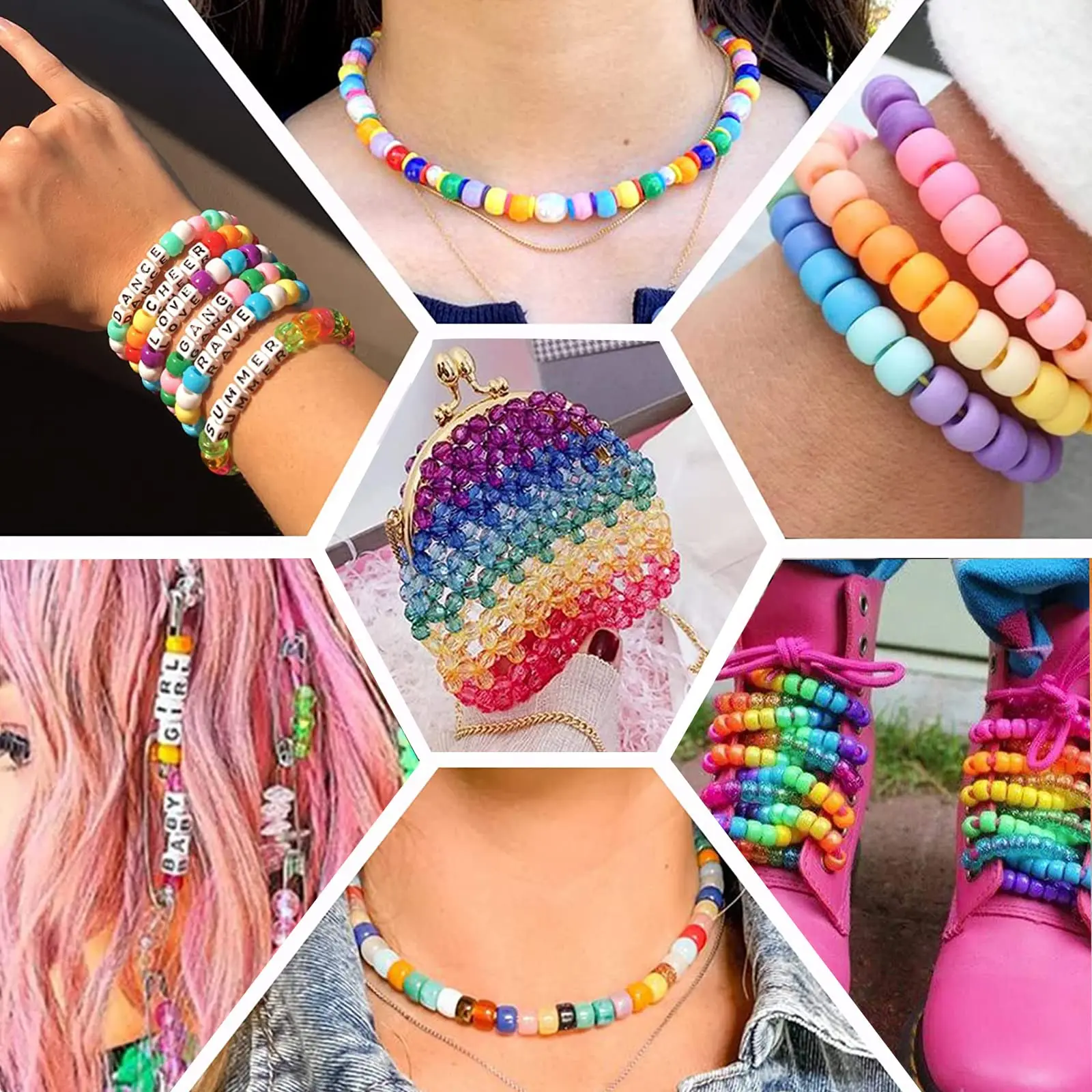 How to Make Your Own Kandi Bracelet
How to Make Your Own Kandi Bracelet
Choosing the Right Materials
Creating kandi bracelets starts with gathering supplies. The basic items include beads, stringing material, and tools.
Pony beads are the most common choice. They’re affordable, widely available, and come in hundreds of colors. Look for uniform sizes to ensure consistent patterns.
Alternatively, use Perler beads or Toho seed beads for smaller, more detailed designs. These work well for advanced projects.
Stringing options include stretchy elastic cord, nylon thread, or fishing line. Elastic is easiest for beginners. It allows the bracelet to slip on and off easily.
Nylon thread offers durability. Pair it with a clasp for a more secure fit. Use heat-shrink tubing or crimp beads to finish ends neatly.
Scissors, tape, and a clipboard help during assembly. Tape keeps cords in place while you bead. A clipboard holds pattern templates steady.
Organize beads in compartment trays. This prevents mixing and speeds up the process.
Invest in a bead loom if you plan to make many bracelets. Looms keep tension even and allow complex weaves.
Otherwise, off-loom techniques like the fishtail braid work well for home crafting.
With the right materials, anyone can start creating beautiful kandi bracelets.
Step-by-Step Guide to Basic Weaving Techniques
Beginners should start with simple patterns. The single-strand weave is ideal for learning.
First, cut a piece of elastic cord about 10 inches long. Tie a knot at one end and tape it to a flat surface.
Thread beads onto the cord following your chosen pattern. For example, try red-white-red-white for a classic look.
Once the strand reaches wrist length (usually 15–20 beads), tie a knot at the end. Leave a small tail for adjustments.
Pull gently to test tightness. The bracelet should stretch enough to fit over the hand but snap back securely.
Trim excess cord and tuck knots inside the last bead if possible.
Another beginner-friendly method is the fishtail braid. It uses two strands and creates a textured effect.
Secure two cords side by side. Add matching beads to each strand. Cross the right bead over to the left side and vice versa.
Repeat until the bracelet is long enough. Finish with a knot or clasp.
Practice builds speed and confidence. Start slow and focus on consistency.
Soon, you’ll be able to tackle more advanced styles like the brick stitch or ladder weave.
Creating Custom Designs and Personalized Sets
Once comfortable with basics, experiment with original ideas. Designing custom kandi bracelets makes them even more special.
Sketch your pattern on graph paper. Each square represents one bead. This helps visualize symmetry and spacing.
Use online generators or apps to plan multi-color sequences. Some let you preview designs in 3D.
Incorporate themes like zodiac signs, favorite bands, or sports teams. Spell out initials using letter beads.
Make matching sets for friends or family. Vary colors slightly to reflect each person’s personality.
Glow-in-the-dark or metallic beads add flair. Mix matte and shiny finishes for contrast.
Consider seasonal variations. Pastels for spring, bright neons for summer, deep tones for winter.
Gift a set with a note explaining the symbolism. This deepens the emotional impact.
Customization turns kandi bracelets into wearable art. They become unique expressions of identity and care.
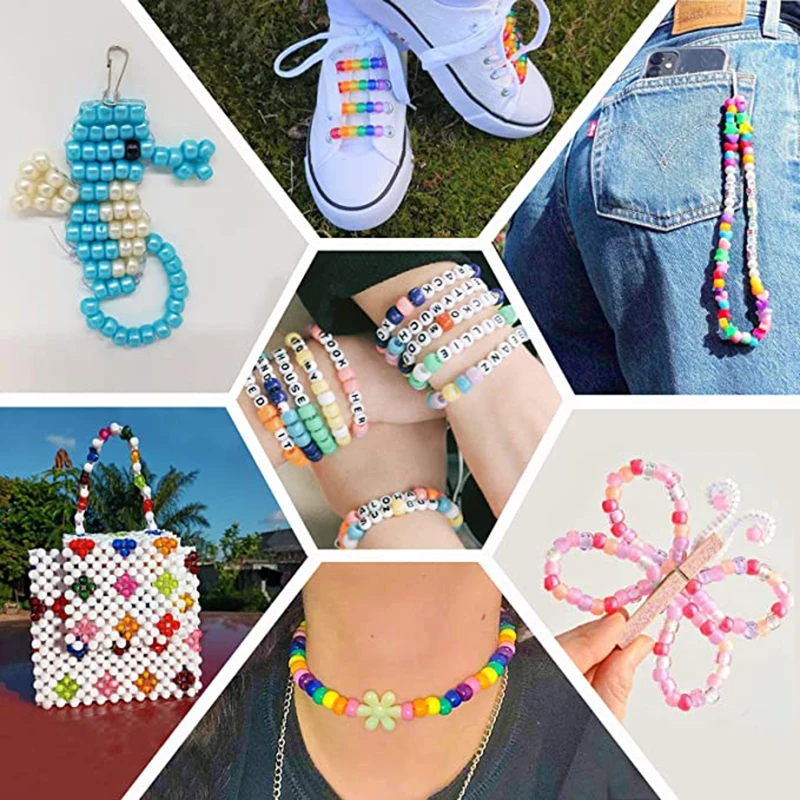 Benefits of Making and Wearing Kandi Bracelet
Benefits of Making and Wearing Kandi Bracelet
Encourages Creativity and Mindfulness
Crafting kandi bracelets engages both hands and mind. The repetitive motion of threading beads has a calming effect.
Many people find it meditative. Focusing on color patterns distracts from daily stress. It promotes presence and relaxation.
Children benefit too. Beading improves fine motor skills and hand-eye coordination. Schools use it in sensory activities.
Adults use kandi bracelet making as a digital detox tool. Instead of scrolling, they create something tangible.
It also sparks artistic thinking. Choosing colors, testing layouts, and solving design issues stimulate creativity.
Unlike passive hobbies, this craft produces lasting results. Wearers gain pride in their handmade pieces.
Additionally, setting goals—like completing a themed set—builds focus and perseverance.
Hence, kandi bracelets aren’t just fun. They support mental wellness and creative growth.
Builds Community and Social Connection
One of the greatest joys of kandi bracelets is sharing them. Whether traded at festivals or gifted to friends, they strengthen bonds.
Making bracelets together turns into a group activity. Families, classrooms, and clubs bond over shared projects.
At camps or retreats, kandi exchanges encourage conversation between strangers. They break the ice naturally.
Online communities thrive around this craft. Reddit threads, Facebook groups, and Discord servers share tips and patterns.
Members send “care packages” with free beads and starter kits. This generosity reflects the PLUR spirit.
Schools use kandi bracelet workshops to teach inclusivity. Students make bracelets for peers going through tough times.
Even workplaces host crafting sessions to boost morale. Employees leave with gifts and stronger relationships.
These interactions foster empathy and belonging.
Therefore, kandi bracelets do more than decorate wrists. They connect hearts.
Supports Fine Motor Skills and Cognitive Development
Beyond emotional benefits, kandi bracelet making supports physical and mental development.
The act of picking up tiny beads sharpens finger dexterity. This is especially helpful for young children and seniors.
Following a pattern strengthens working memory. Remembering sequences trains the brain to retain information.
Problem-solving arises when a design goes wrong. Fixing mistakes teaches patience and adaptability.
Counting beads reinforces math skills. Kids learn addition, subtraction, and pattern recognition.
Color sorting enhances visual discrimination. Recognizing subtle differences improves attention to detail.
For individuals recovering from injury or managing conditions like ADHD or anxiety, beading offers therapeutic value.
Occupational therapists use similar tasks to rebuild coordination.
Thus, kandi bracelets serve as both art and therapy.
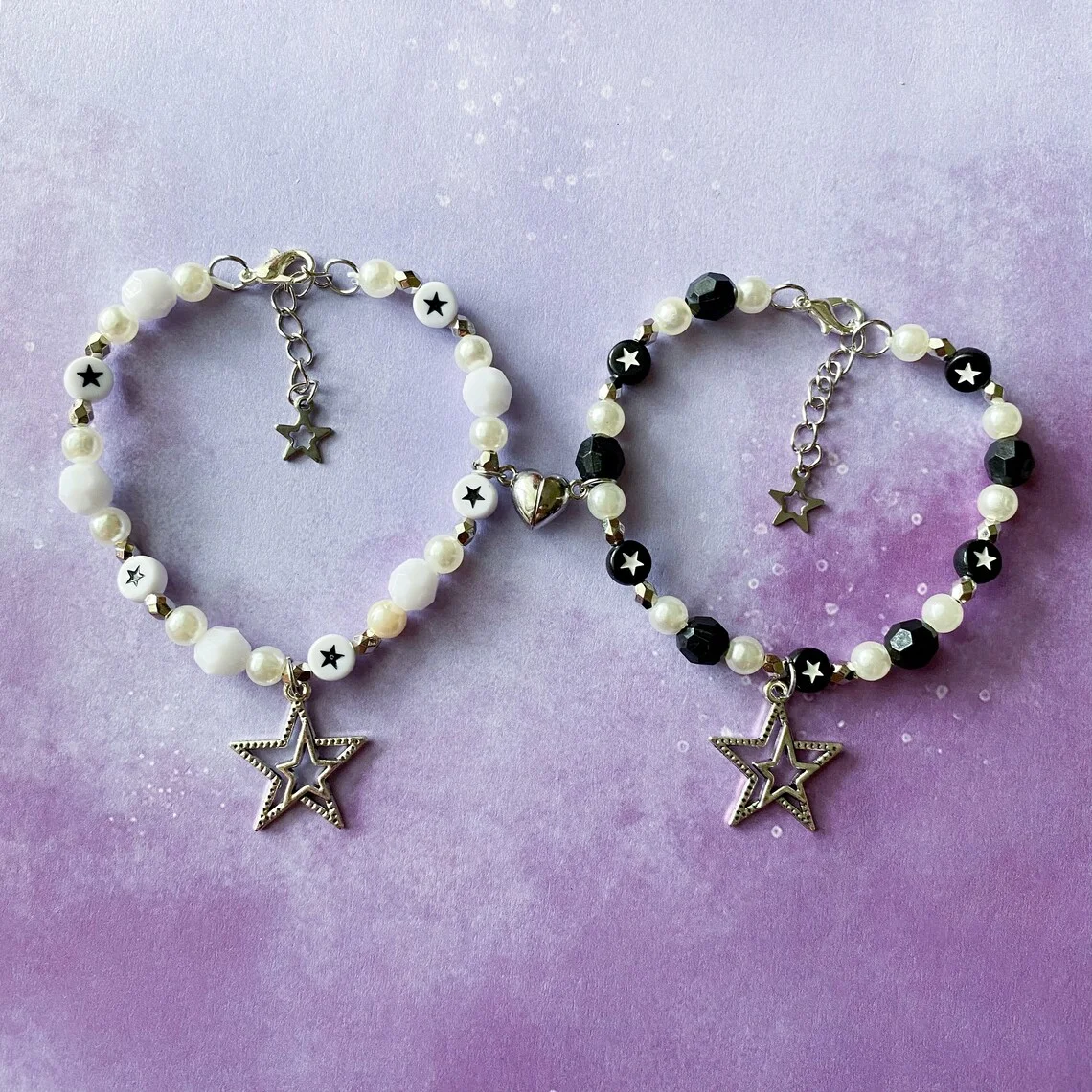 Frequently Asked Questions About Kandi Bracelet
Frequently Asked Questions About Kandi Bracelet
Q: Are kandi bracelets only for raves?
No. While popular at festivals, they’re worn daily by kids, teens, and adults for fashion and fun.
Q: Can I wash my kandi bracelets?
Yes, but gently. Use mild soap and water. Air dry completely before wearing again.
Q: How long do kandi bracelets last?
With proper care, years. Avoid constant exposure to water, lotions, or direct sunlight.
Q: What age is appropriate for making kandi bracelets?
Ages 6+ with supervision. Younger children may need help with small beads.
Q: Do kandi bracelets have cultural appropriation concerns?
Some designs borrow from Indigenous or African beadwork. Always credit sources and avoid sacred symbols.
Q: Where can I buy quality beads and supplies?
Online stores like Amazon, Etsy, and specialty craft shops offer wide selections. Join forums for trusted vendor lists.
 Final Thoughts: Why Kandi Bracelets Remain a Powerful Form of Self-Expression
Final Thoughts: Why Kandi Bracelets Remain a Powerful Form of Self-Expression
Kandi bracelets are more than colorful accessories—they are vessels of emotion, identity, and connection. From their roots in rave culture to their presence in homes and schools worldwide, they continue to inspire joy and unity. Whether you’re weaving your first bracelet or trading one at a festival, the act carries meaning. The combination of creativity, symbolism, and community makes kandi bracelets timeless. They remind us that small gestures—like giving a handmade gift—can have big impacts. As long as people seek ways to express themselves and connect with others, kandi bracelets will hold a special place in our lives. So gather your beads, choose your colors, and start creating. The world needs more peace, love, unity, and respect—one kandi bracelet at a time.
